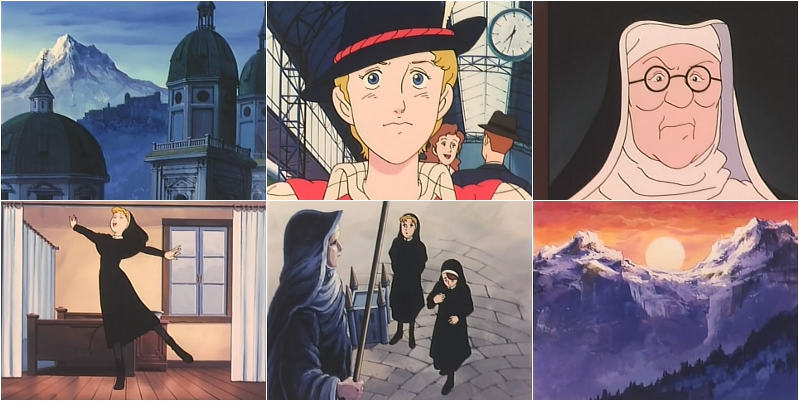
Do you like orphans? Do you like Nuns? Do you like singing? Well you were in luck in 1991 as House Foods World Masterpiece Theatre adapted Maria von Trapp’s memoir The Story of the Trapp Family Singers.
Now, I’ve never read that book, and don’t think I’ve seen The Sound of Music. Certainly not as an adult at least. It feels like what I know about the story I know only through cultural osmosis. So I’ve not really got much to judge this adaptation against.
Likewise, I don’t think I’ve seen an entire World Masterpiece Theatre series. Certainly, I’ve seen bits here and there, I think the last one I dipped into would have been the Story of Perrine. But not enough to say where this looks to stand in the oeuvre. Someone else will have to be judge of whether this is good or bad WMT.
What I will say is this. Nuns must be fun to animate.
The animation is certainly fine for TV animation early on, with Maria in her Austrian tomboy get up and exploring Salzburg, but once the nuns appear then we start to get some fun movement. The solid black robes allows for interesting clothing movement without getting bogged down in the detail of folds and rumples. Nuns are like living shadow puppets.
With just a face and a shape the animators get across a lot of different personalities with little effort. The faces are of course designed by Shuichi Seki. Seki’s early designs were on shows adapting western properties, Vicky the Viking and Little Lulu. The aforementioned Perrine was his first WMT design work. From then his open, slightly bean shaped faces became the look of WMT. More recently he did the character design for the Gokyoudai Monogatari TV show.
Unusually for a WMT show, the plucky orphan here is an adult. Actually when I think about it, it’s fairly unusual for pop culture as a whole. The good thing is that because of that, despite annoying all the other nuns, Maria doesn’t come off as too cloying. The ending theme not so much with it’s alternating HAPPY FAMILY SCENE / MISERY approach.
The other thing that struck me was some of the establishing location shots seem to linger unnecessarily long. Then I realised that is animation as travelogue. These background paintings are actually pretty accurate depictions of actual real life locations. Locations that were thousands of miles away from the intended audience. So let them soak it in.
While it’s nicely made for a TV anime, the main thing that is tempting me back is the promise of the opening sequence that the mascot animal of the show is a full grown cow. I am curious as to how they plan to make that work, if indeed they do.